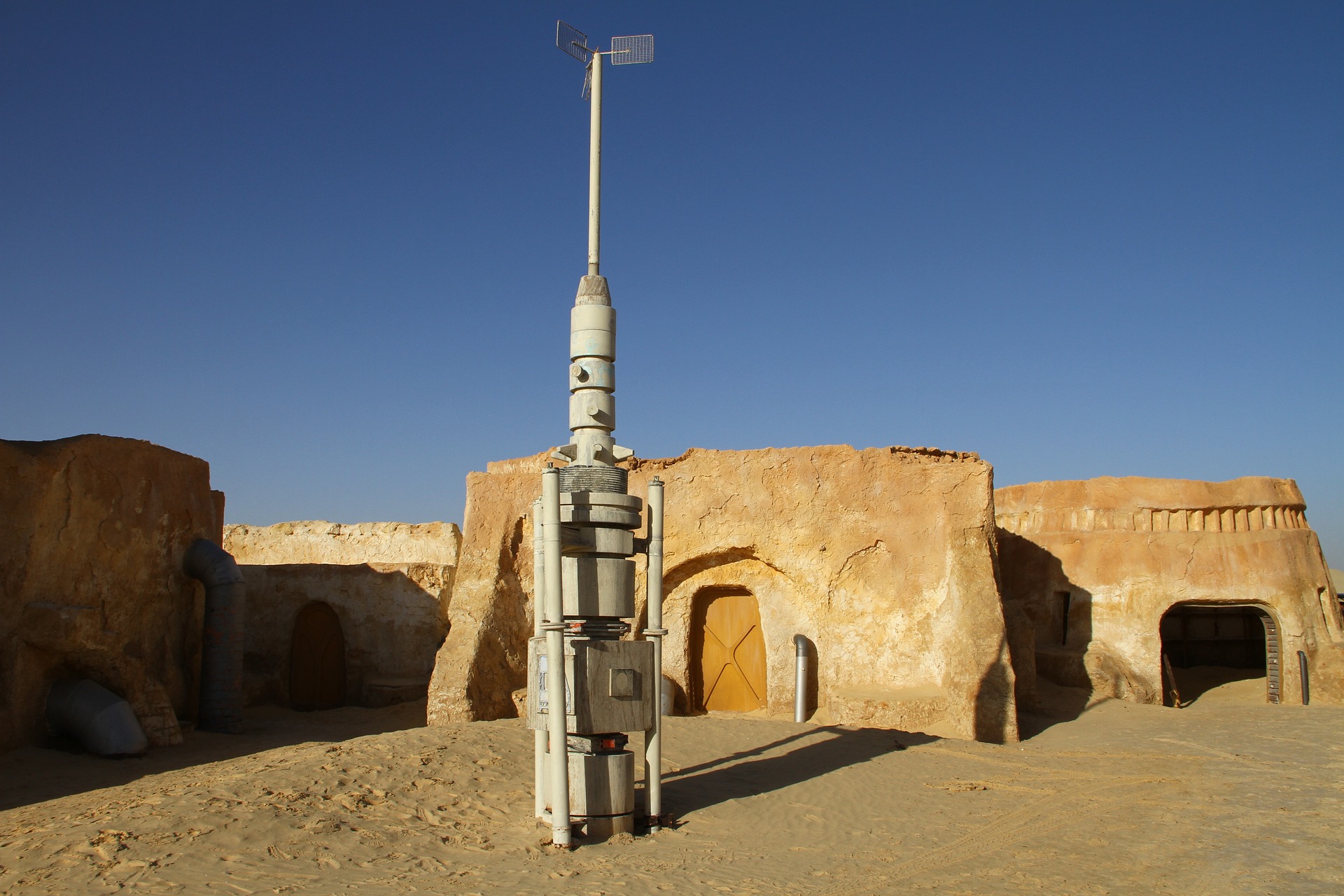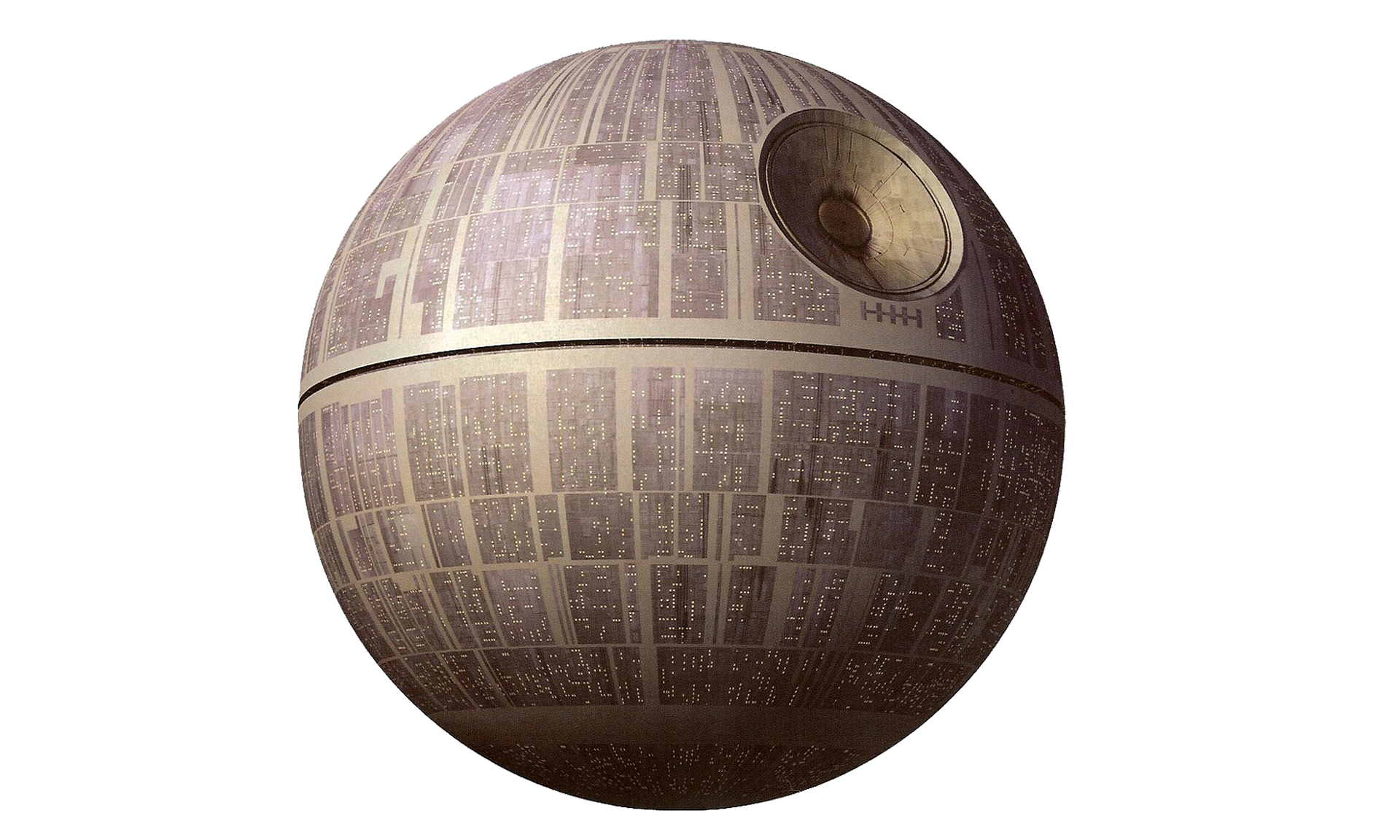
Pop Culture
The Economics of Star Wars
Read a summary using the INOMICS AI tool
Star Wars probably needs no introduction here. One of the largest entertainment properties of all time, it has grown far beyond its (humble?) beginnings on the movie screen. Now, we can learn about “a galaxy far, far away” through books, comics, TV series, video games, and more.
This article will dive into the economics of the Star Wars galaxy implied by the franchise, mainly from the movies and some of the TV series. As such, fairly mild spoilers abound; beware if you intend to watch some Star Wars movies or shows, but haven’t yet.
Money in the Galaxy Far, Far Away
In Star Wars, people typically conduct transactions using “credits”, which amount to some futuristic-looking cash. This currency is used almost everywhere in the galaxy, to the point that most citizens only comment on it when certain transactions don’t accept credits.
For example, in The Force Awakens, Daisy Ridley’s Rey is paid in food on a bartering basis rather than being paid with money, which tells us how much of a backwater she lives in. Similarly, after an emergency landing on a different backwater planet in The Phantom Menace, Liam Neeson’s Qui-Gon Jinn is forced to engage in some good old sports betting to muster up needed cash. Other than scenes such as these, which serve to highlight certain dire economic situations, credits are used and talked about by almost everyone.
This widespread credit usage immediately raises two major questions. First, how did the galaxy unify its form of currency across planets, cultures and languages, and how is that currency controlled? Second, why are electronic payment methods seemingly unused?
We can look to one real-life example of currency consolidation – the European Union – to perhaps answer the first question. Upon induction, member states in the EU must transition to using euros rather than their original sovereign currencies. While this prevents each individual nation from having complete control over their monetary policy, becoming part of the EU trading bloc opens up a host of other opportunities for the country and its citizens.
It is entirely possible in Star Wars that the many planets making up the Galactic Republic agreed to create an economic bloc like the EU, giving up their original currencies and adopting galactic credits instead. These are presumably controlled by the galaxy’s central bank on the capital planet Coruscant, where the Senate, with representatives from every planet, governs. Of course, when the Empire took over in Revenge of the Sith, it seemingly just changed the name from galactic to imperial credits and the payment infrastructure probably remained the same.

Picture credit: Pixabay.com
It is also possible, though unlikely, that currencies were consolidated because of financial instability. When a country experiences hyperinflation, one solution to break the doom spiral of runaway inflation is to simply stop using the local currency and adopt a foreign one. This has happened before in our history, for example when Ecuador adopted the US Dollar as its official currency in the year 2000 (this process is known as “full dollarization”). If multiple Star Wars planets underwent “full creditization”, it may have started a gradual process of galactic transition to credit usage for ease of transactions.
So, where are all the electronic payments?
Electronic payments seem to be very seldom used in Star Wars, and almost never on-screen. One of the few times we know for certain that electronic payments did occur are during Senator Mon Mothma’s scenes in the acclaimed series Andor. In several of her scenes, she must support the nascent Rebellion with electronic transfers without being traced by Imperial intelligence.
Despite the rarity of references to electronic transfers on-screen, it’s possible that electronic payments are widespread, and viewers are simply not exposed to them very often due to the nature of the typical Star Wars protagonist. Many of the characters we see are either poor, Jedi, government agents, or people conducting illegal activity.
For some, like perhaps Luke Skywalker and his Uncle Owen and Aunt Beru, electronic payments may be unaffordable or impractical (maybe they can’t afford or don’t need to transfer funds as moisture farmers in the desert). For other characters, like most of the Jedi, payment is often an unnecessary affair; Jedi’s living expenses are presumably sponsored by the government or the Jedi Council. Moreover, Jedi had to renounce all attachments as part of their training, so it’s unlikely that any of them would be seen paying for an elaborate meal or other luxuries.

Picture credit: Pixabay.com
For other characters, electronic payments might even be dangerous. Members of the Rebellion in the Empire era – as well as The Mandalorian’s title character – would probably want to avoid using traceable payment methods so they can avoid being tracked down by their enemies. An example supporting this theory is the aforementioned Mon Mothma scenes in Andor.
So, it seems that electronic payment methods do exist in Star Wars. But, much like Germany in our world, for various reasons cash payments continue to thrive. Regardless of the payment method, the galaxy’s economy appears to be quite a hospitable place for conducting business…
Corporations in Star Wars
Capitalism is an oft-praised, oft-derided economic system that is currently the most common form of economic organization around the world. One of the key complaints that people may have about capitalism is that it can sometimes put profit and the rights of corporations above other things, including the environment. It can lead to seeming excess in certain areas, like inflated executive pay and increasing wealth inequality, as well.
In Star Wars, corporations wield immense power in a seemingly capitalist system that features very little regulation. This is shown even at the very start of the saga, in Star Wars Episode I: The Phantom Menace, where a corporation (the Trade Federation) blockades an entire planet (Naboo) with its own private military force, and even begins to arrest the citizens and send them to labor camps. Meanwhile, this same corporation has a seat in the Galactic Senate on Coruscant, where Trade Federation representatives are apparently treated just the same as any other senator – including the senator from Naboo, the not-yet-Emperor Palpatine.
Other corporations have a large impact on the saga as well. The Trade Federation is one of several corporations that form the economic backbone of the separatist movement in the Clone Wars. The Galactic Republic itself, fighting against the separatists in the war, accepted the help of a large corporate enterprise to do so; the Republic’s army of clone soldiers was built at the request of a Jedi Master by Kaminoan cloning services. Although a formal company name is never given in the movies, it’s clear that the Kaminoans are cloners for profit – they produced the units for the Republic and did it for money. But, unlike the separatists, the society on Kamino appears to have no political motives, only profit.
Certainly, the activity of corporations on such a scale is something that has become normal to the galactic population. One reason that corporations have probably been able to grow so large and powerful is the lack of trade barriers or serious roadblocks to growing business across the galaxy. This is due to a few factors that will be discussed further below…
Trade Barriers in the Galaxy
In economic theory, trade barriers increase transaction costs and lower overall economic welfare by lowering economic surplus. So, when transaction costs are lower, ceteris paribus, the economy is much more efficient because comparative advantage is made easier to benefit from. Nations can trade much more freely, which increases everyone’s utility since goods are being made relatively cheaper than they would in the presence of higher transaction costs.
So, how do the people of the Star Wars galaxy experience trade barriers and transaction costs?
Language & Communication
Economies, at their core, consist of people conducting transactions. Common language allows these transactions to grow beyond two people grunting at one another and handing over a few chickens for some beans. Moreover, a lack of common language or the need for translation services increases transaction costs and can inefficiently reduce trade. Therefore, lack of common language is a good example of a naturally-occurring trade barrier.
In Star Wars, almost everyone speaks the same language. The few major exceptions to this rule include the well-known Wookiee race, who speak in growls and whimpers (like Chewbacca), some forms of droid (like R2-D2), and a few cultures or species like the Tusken Raiders or the Hutts that seem to have their own entrenched culture. But even in these cases where someone isn’t speaking the common language, either everyone else in civilized society understands them just fine, or translators are able to pick up the slack quite easily (we see C-3PO translating for Jabba the Hutt in Return of the Jedi even though he wasn’t built to be a Hutt translator, for example).
This suggests that in Star Wars, language barriers are functionally extinct. This common language across species and planets clearly serves to unify society and massively reduce transaction costs across the galaxy, greatly encouraging prosperity. The lack of conflict we see along ethnic or species lines in Star Wars reinforces the idea that the galaxy has been generally unified through common language and economic activity.
Distances & Transportation
Transportation cost is another major barrier to trade. It’s difficult to transport goods across long distances and keep them in good enough condition to sell, especially for perishables like food. Historically, trade routes across mountains and deserts are perilous and more rare than routes across easily navigable terrain. And, until the proliferation of better sailing technology, the western and eastern hemispheres were largely cut off from one another.

Picture credit: Pixabay.com
For a galaxy with entire planets separated by the vacuum of space, one would expect transportation costs to be very high. But in Star Wars, travel between planets is easy, fast, and cheap, thanks to hyperdrive technology that even single-person spaceships often have access to. Hyperdrive enables faster-than-light (FTL) travel, which allows ships to travel across the galaxy in a matter of…hours? It’s never made perfectly clear to viewers, though certainly travelers can get to almost any planet in under a day with this technology, with no obvious downside.
However, hyperdrive isn’t free - certain spaceships, like the Empire’s TIE fighters, don’t have it. Moreover, the galactic poor are seldom seen leaving their home regions, and local starports like Mos Eisley on Tatooine allow average people to book offworld transportation for a price – which is exactly how Luke Skywalker and Ben Kenobi meet Han Solo and Chewbacca.
If hyperdrive technology were free, Han and Chewie would certainly not be able to charge Luke and Ben a high price for transport. Still, the availability of cheap and widely available FTL technology that can be utilized via small spacecraft has clearly done wonders for the galactic economy. Planets, rather than being separated by millions of years of slow travel or prohibitively expensive technology, can be reached in hours or days at most.
Combined with the aforementioned fact that language barriers don’t really exist, transaction costs appear to be very low in Star Wars. The galaxy thus appears to be a beacon of economic productivity. It may come as no surprise, then, that the Empire was able to produce not one, but two moon-sized Death Stars in the span of only a few years. That’s certainly a feat that would require a high level of productivity!
The Shadow Economy in Star Wars
However, the ease of cheap faster-than-light travel and lack of barriers to communication have clearly allowed criminal elements to flourish in the galaxy.
The aforementioned Jabba the Hutt is a member of the Hutt family, who are depicted as cartel-like. But their family isn’t the only criminal enterprise shown. In Star Wars: The Clone Wars and Disney’s The Book of Boba Fett, viewers are introduced to the Pyke Syndicate, who threaten to fill the power vacuum on Tatooine after Jabba’s death (not to mention that Fett tries to launch a criminal empire in the latter series). Several other powerful criminal organizations are seen across Star Wars properties, such as the Crimson Dawn syndicate that features prominently in the movie Solo: A Star Wars story.
Bounty hunters also feature often in Star Wars, starting with the motley assortment of hunters hired by Darth Vader in The Empire Strikes Back and recently portrayed by Disney’s popular The Mandalorian. By definition, these bounty hunters operate mostly outside of the law, taking jobs to assassinate, smuggle, escort, hunt, or otherwise accomplish things by force – for a price.
Moreover, forced labor and slavery form the backbone of the immoral Empire’s economic machine in some areas. The TV series Andor showcases how the Empire rounded up civilians on trumped-up false charges and kept them in a rotating prison labor system. This is one of the ways that the Empire was seemingly able to churn out the massively expensive Death Star project, as parts for the machine were made in forced labor systems such as these. Not paying for labor (one of the major factors of production) of course lowers the cost of output quite a lot!

Picture credit: Pixabay.com
We don’t have access to reliable measures of the Star Wars galaxy’s total economic output, which may be measurable by GDP as it is in real life. However, it’s likely that just as in our world, the galaxy’s total GDP is probably underreported because of these illegal activities.
This is because illegal activities, while they do produce economic value, are not represented in official counts of GDP. In both our world and in Star Wars, illegal products and services create consumer and producer surplus. But, because the good (or service) is illegal, the market occurs in secret and thus the economic value it produces is not reported. These unreported transactions are known as the “shadow economy” in economics, and it is clear that the shadow economy in Star Wars is quite large.
Whether legal or not, economic activity around the galaxy is depicted in many ways in Star Wars. Are there other examples we haven’t touched on? What implications do they have for the galactic population? Feel free to introduce your own examples in the comments below!
Header image picture credit: Pixabay.com
-
- Assistant Professor / Lecturer Job, Professor Job
- Posted 1 week ago
Lecturer / Senior Lecturer in Economics
At University of Canterbury in Christchurch, New Zealand
-
- Conference
- Posted 1 week ago
Call for Papers on Fiscal and Monetary Policies in Developing Economies for Navigating Fragmentation Risks
Between 28 Jul and 29 Jul in Singapore
-
- Summer School
- Posted 1 week ago
BSE Summer School 2026: Economics, Finance, Data Science, and related fields
Starts 22 Jun at Barcelona School of Economics in Barcelona, Spain
















